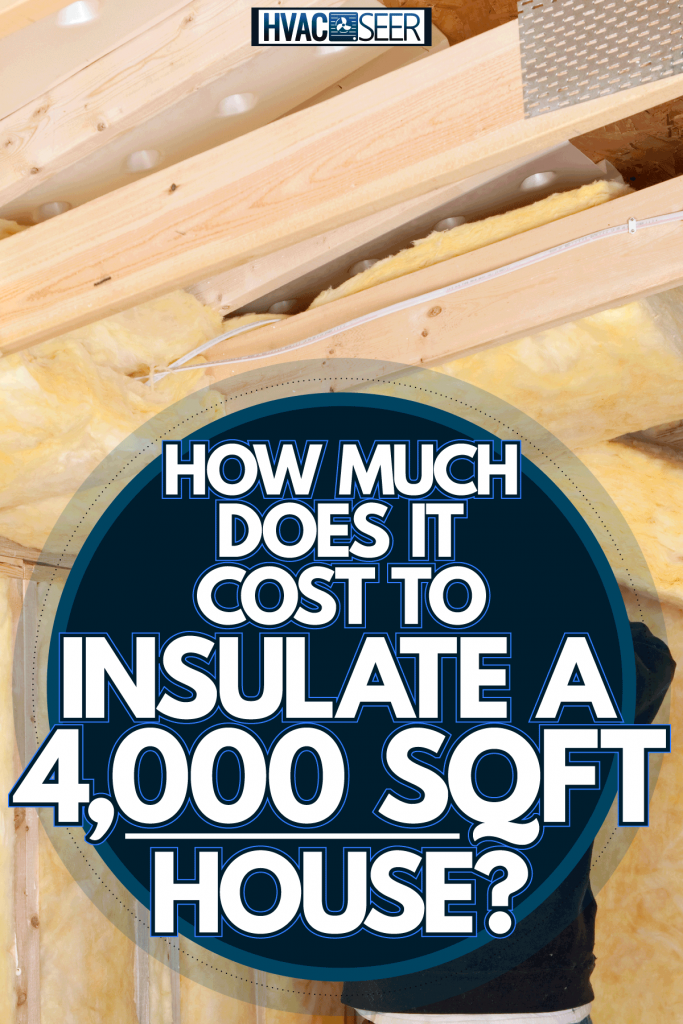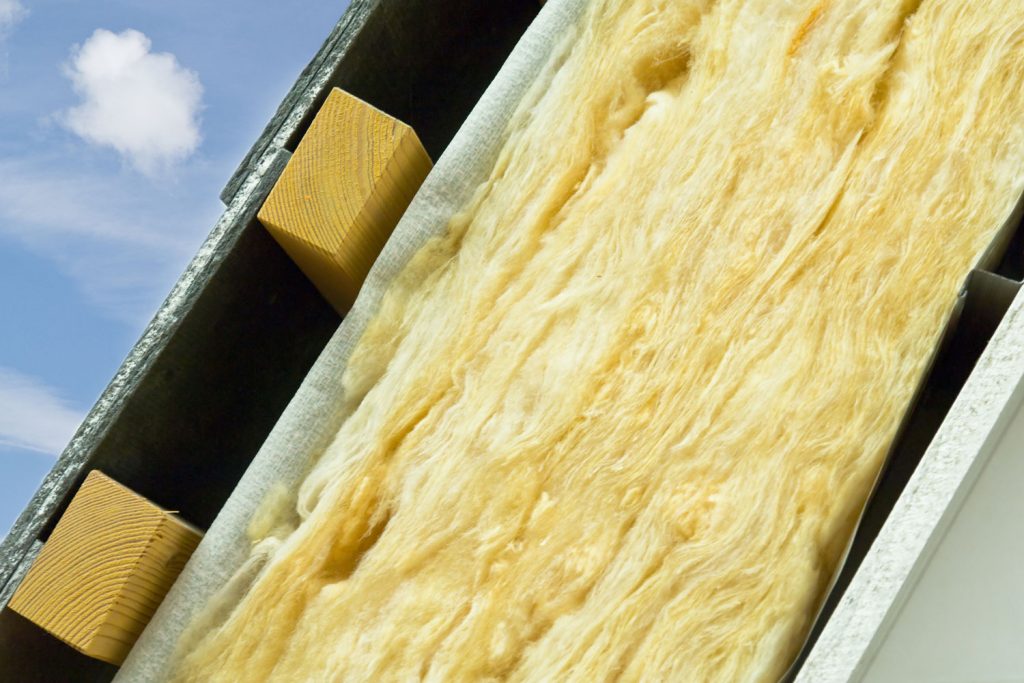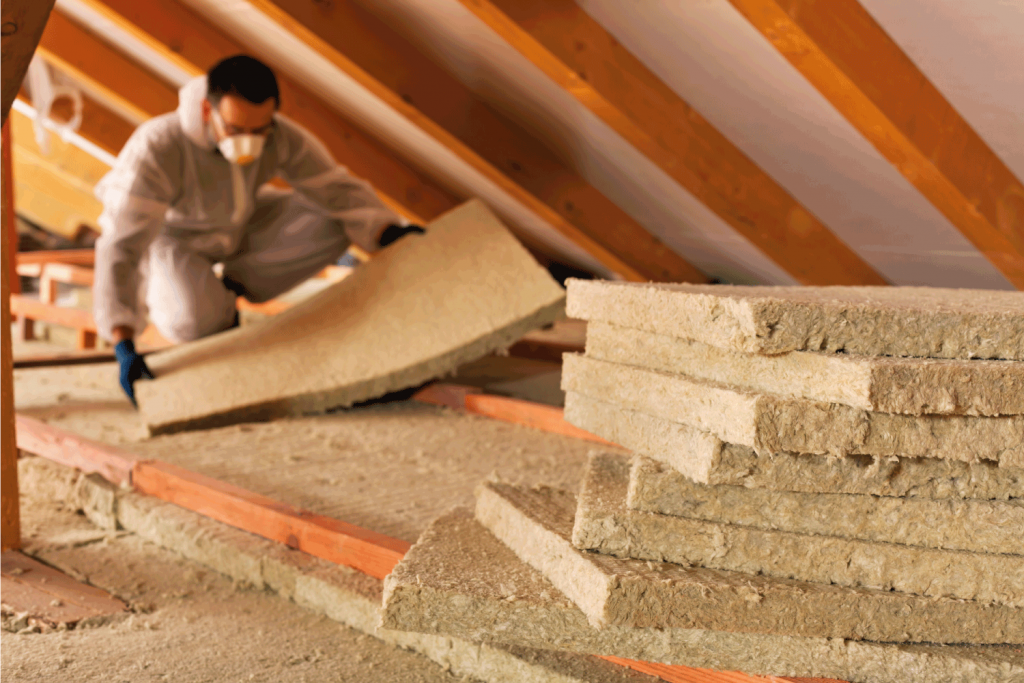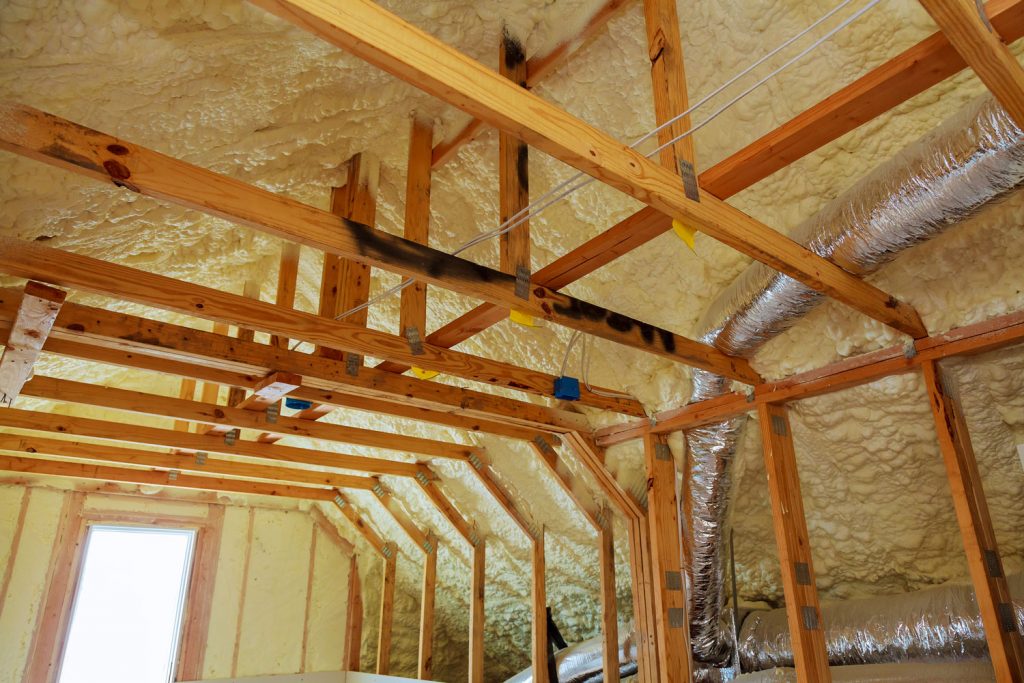Having adequate insulation in your home is essential to indoor temperature regulation and overall comfort. So whether you are looking to upgrade your current insulation or replace old and worn insulation, it's helpful to understand the cost factors involved. We have researched the cost to insulate a 4,000 square foot house, and in this post, we will go over it with you.
The cost to insulate a 4,000 square foot house will depend on the type of insulation you use and whether or not you perform the work yourself. If you hire a contractor to perform the work, you can expect to pay double the cost that you would if you did it on your own.
Fiberglass batts and rolls:
Material: $0.30 to $1.12/square foot Labor: $0.50 to $.90/square foot Lowest cost for 4,000-square-foot home: $1,200 for DIY and $3,200 for professional
Blown-in insulation:
Material: $0.30 to $1.15/square foot to $2.20/square foot Labor Cost: $0.60 to $1.08/square foot Lowest cost for a 4,000 square-foot home: $1,200 for DIY and $3,600 for professionals
Radiant barrier insulation:
Material: $0.15/square foot to $0.30/square foot Labor: $0.70/square foot to $1.00/square foot Lowest cost for a 4,000 square-foot home: $600 for DIY and $3,400 for professionals
Every type of insulation will come with its advantages and disadvantages. It's essential to consider the size, accessibility, and R-value requirement for insulation in your area before deciding which insulation type is best for your home. Continue reading to learn more about insulation costs and how they can vary among different types.

How much does it cost to insulate a 2,000 square-foot house?
You can install your own fiberglass insulation for about $600 or as low as $1,600 if you have a professional perform the job (note that you may also have to pay extra costs for sealing).
Blown-in insulation can be installed for as low as $600 if you do it yourself and about $1,800 if done professionally.
You can install your own radiant barrier insulation (most commonly used in attics) for about $600 and around $1,400 if you outsource it.

How much does it cost to spray foam a 3,000 square-foot house?
On average, spray foam costs about $0.44 to $1.50 per square foot, with closed-cell foam costing more than open-cell foam. However, the insulation cost will run you about the same amount of money which can be anywhere from $0.60 to over a dollar per square foot.
So for a 3,000 square-foot home, you can expect to pay as low as $1,320 for the materials if you install them yourself and about $3,120 if you outsource the work to a professional.
What's the most cost-effective insulation?
Overall, fiberglass insulation tends to be the number one pick when it comes to cost-effectiveness. This is why it is still the most commonly used insulation material in homebuilding.
71% of homeowners use fiberglass insulation in comparison to blowing, radiant barriers, and spray foam.
Which type of insulation is most efficient?
Fiberglass, mineral wool, and cellulose are typically considered the most efficient types of insulation. Let's discuss why.
Fiberglass Insulation
Fiberglass is not only expensive but it's also one of the easiest and efficient installation types to use. It's made from fine strands of silicon glass powder woven together to create a thermal heat barrier.
It's also important to note, however, that fiberglass can cause damage to your lungs, eyes, and skin if proper safety equipment isn't used during the installation.
Fiberglass insulation can be purchased in R-values ranging anywhere from 13 to 50. Fiberglass is also sprayed with various chemicals so that it is non-flammable and mold-resistant. Some brands also use chemicals to make the insulation more pest-resistant.
Mineral Wool
Mineral wool insulation comes in various types. It can be made from glass wool which is a product of recycled fiberglass, or it can be made from slag wool or Rockwool (which is made from basalt).
You can purchase mineral wool and batt rolls or as loose insulation for blow-in insulation. While this insulation is not combustible, it is not as fire-resistant as fiberglass insulation.
However, it is very efficient when used in garages, crawl spaces, attics, and basements. Mineral wool insulation can also range in R-value anywhere from 12 to 40 or more.
Cellulose
If you are looking for the most eco-friendly type of insulation, cellulose is the best way to go. It's comprised of recycled paper, cardboard, and similar materials, and the loose form provides a great thermal barrier.
This material is entirely oxygen-free due to its compact nature, making it resistant to fire damage.
You'll find that it typically costs around the same price as fiberglass and mineral wool insulation. However, the installation process can be more expensive if you outsource it to a contractor.
Overall, the insulation is efficient, effective, and an affordable way to insulate various rooms in your home. You can find it available in R-values ranging from 12 to 50.
How do you know when you need to replace insulation?

You can look for several signs to determine whether or not your insulation needs to be replaced. Let's take a look at the most common ones.
There is evidence of moisture
Insulation that has been affected by humidity may grow mold if it is not dried out in time. This is typically the case where there are significant water leaks in a home due to busted pipes, water heaters, or natural disasters. If you can dehumidify the room, you may be able to save insulation.
However, if the insulation is exposed to standing water for several hours, mold growth may be indefinite. Once mold sets into the insulation, it will need to be removed, as it will create a hazardous condition in your home.
If you suspect that the installation has mold, cut open a few pieces and look for black, brown, or white spots in the insulation.
You want to pay special attention to the areas where the leak was the heaviest, such as the bottom of the insulation if there was a leak from the roof.
It has decompressed and appears damaged
Insulation that has become compressed, damaged, or has begun to peel will need to be replaced. If you notice any cracks, holes, or gaps in insulation, it's best to replace it soon as possible.
Doing so can prevent your home from having wild temperature swings throughout the year. It'll also help keep your energy bills from rising.
Pest Infestation
Another factor that can damage home insulation is the presence of wildlife and pests. For example, raccoons, mice, bats, termites, and squirrels can all invade your attic and crawl spaces, leaving insulation behind.
And more importantly, they can leave your insulation covered in bacteria and waste, which can present a health hazard to you and your family.
If you notice droppings or urine stains on the insulation, chances are that you have a pest or wildlife infestation. If there is an opening in your insulation and home, you may also hear raccoons and mice in the attic.
It's better to nip this problem in the bud as soon as possible to prevent them from spreading to other areas of your home. Infested insulation will need to be removed entirely and replaced.
Factors That Can Compromise the Lifespan of Insulation
You can expect some wear and tear and general compression with insulation over the years. However, certain factors and conditions can significantly reduce the insulation's lifespan.
- There has been significant water damage to your homes, such as a roof leak, busted pipe, or broken water heater.
- There is an issue with excessive humidity in your home, basement, or attic, causing mold to grow on the insulation.
- The insulation has been damaged or punctured in some way, such as by wildlife, pests, moving, or home renovation projects.
Should old insulation be removed?
If insulation is old, worn-out, or damaged, it should be removed. Not only can inadequate or damaged insulation cause your energy bills to rise, but it can also present health hazards to you and your family.
How long does insulation last?
On average, insulation can last anywhere from 70 to 90 years depending on how well it was installed and the internal environment within the home.
Wrapping Things Up

Before installing new insulation in your home, consider the best type of insulation for the job. This includes taking into account the location, R-value, and square footage of the insulation needed.
Before you go, be sure to check out our other posts:
